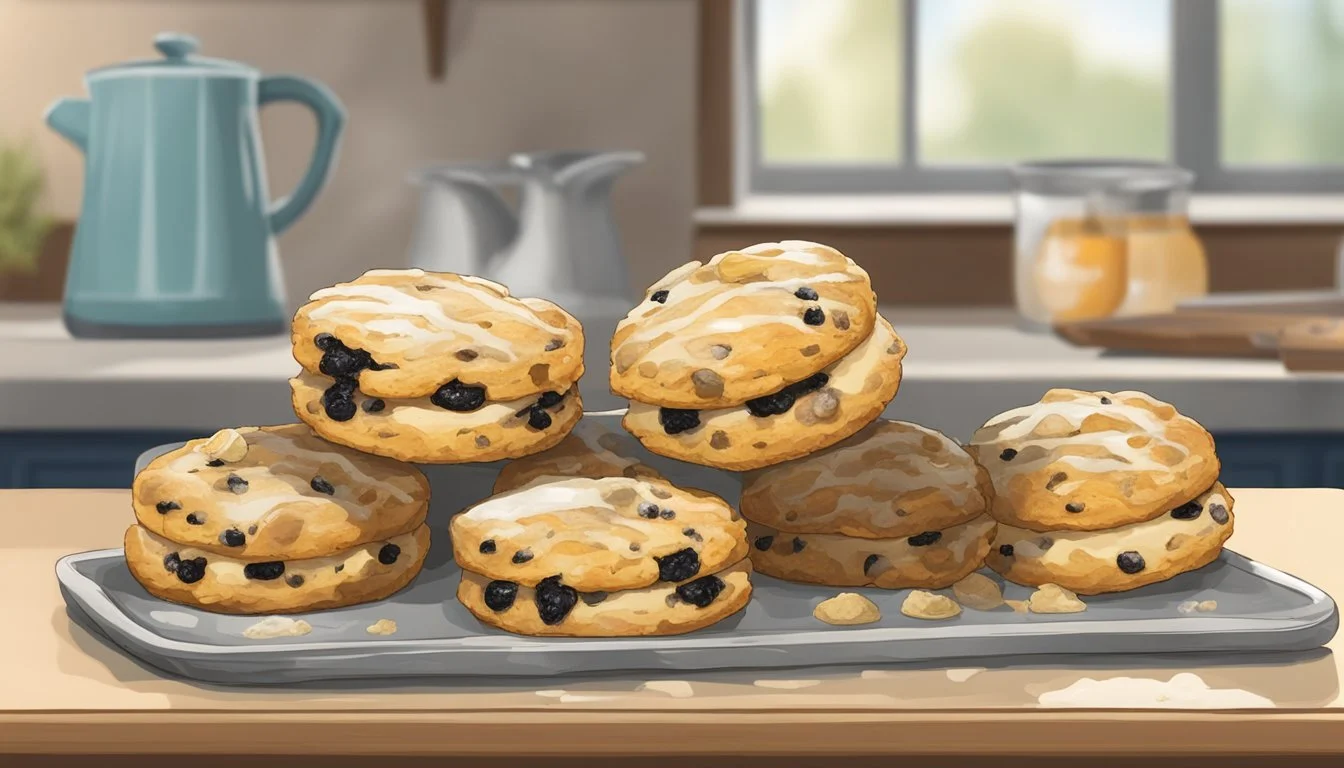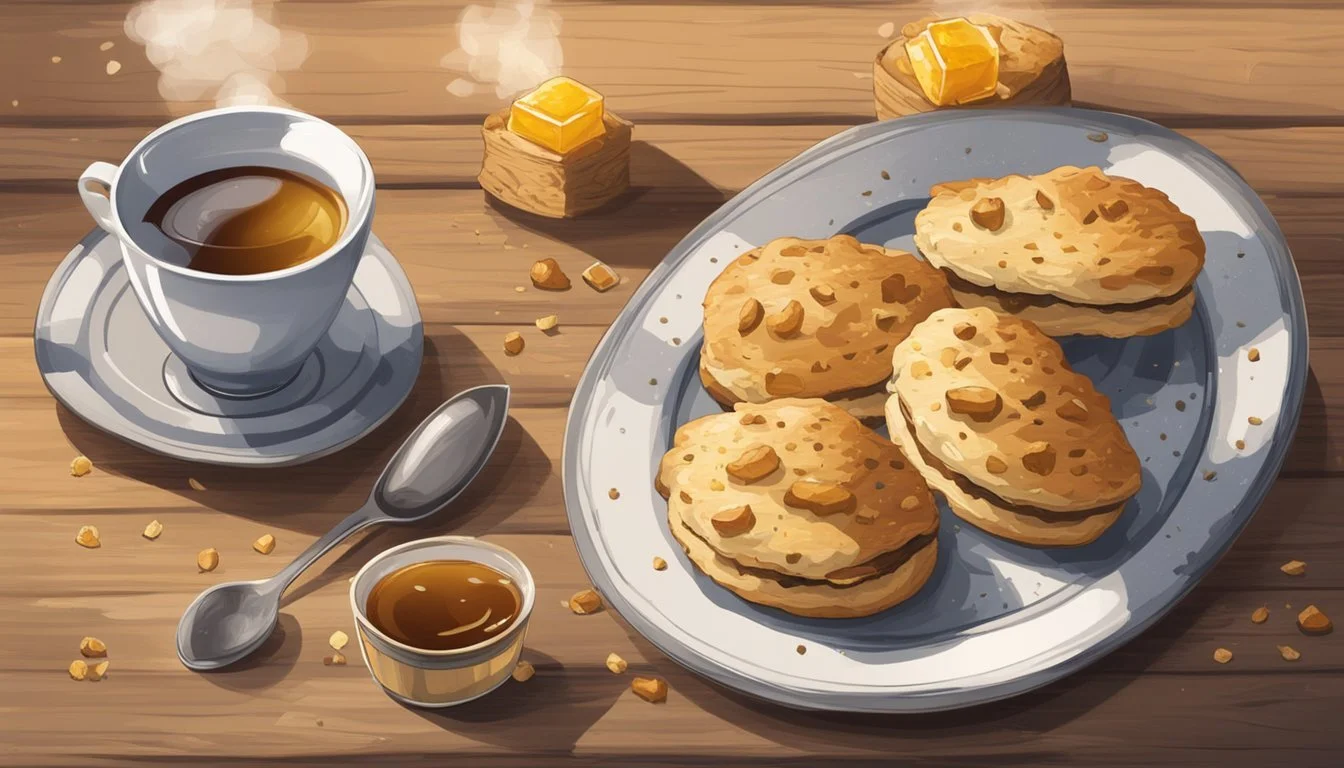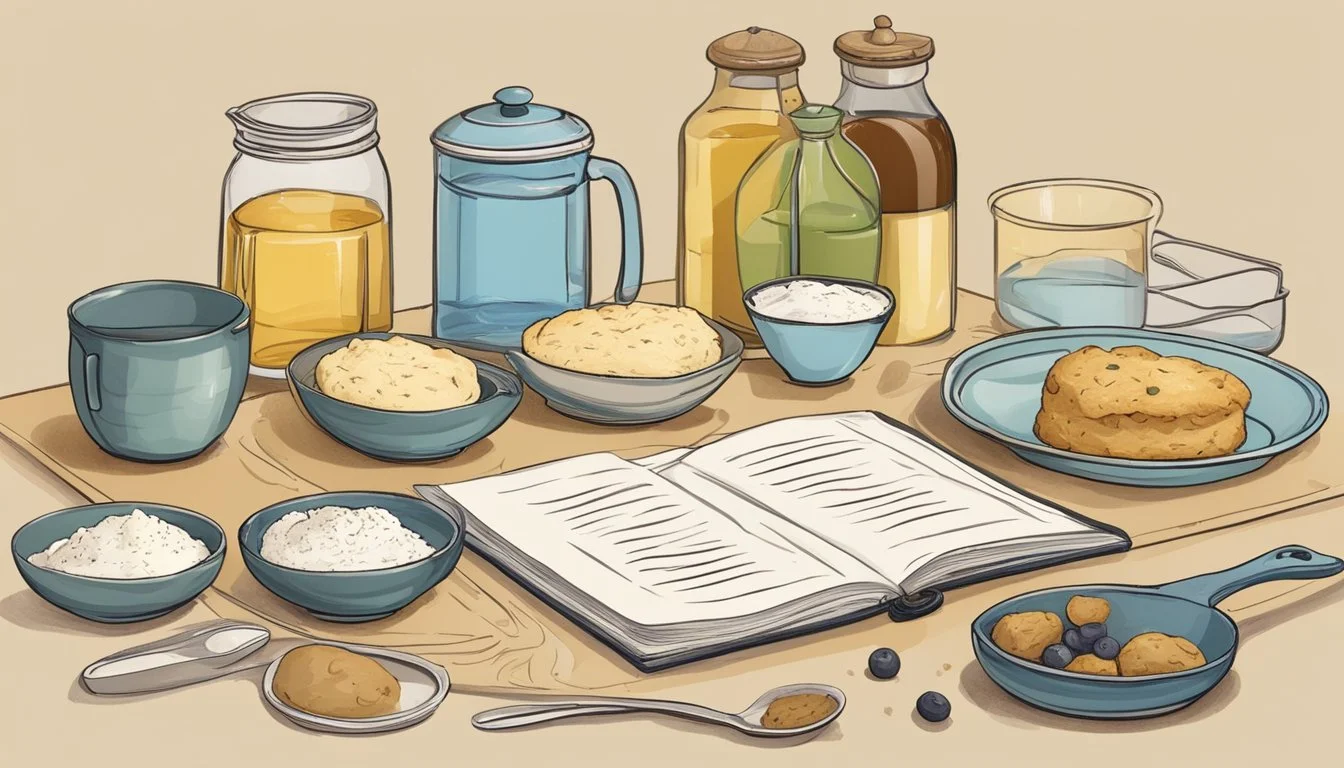Do Scones Go Bad?
Understanding Shelf Life and Storage
Scones, like many baked goods, are best enjoyed fresh but can be stored to extend their shelf life. Contrary to what some might believe, scones do not necessarily go bad immediately; they can remain good for several days or even a week with proper storage. Using airtight containers and keeping them at room temperature helps preserve their texture and flavor for a short period.
For extended storage, scones can be frozen to maintain their quality. Ensure they are cooled to room temperature before freezing. Once frozen, they can be stored in airtight containers for up to three weeks. When ready to enjoy, frozen scones can be baked directly from the freezer to retain their fresh taste.
By understanding how to store scones correctly, you can enjoy these delightful baked goods for longer periods without compromising on quality. This article will explore the best practices for keeping your scones fresh and delicious.
Understanding Scones
Scones, with their delicate balance of ingredients and precise baking process, require careful attention to detail. Knowing the key components and steps can help achieve the perfect texture and flavor.
Ingredients and Consistency
The primary ingredients in scones typically include flour, butter, eggs, milk, and sugar. Selecting the right type of flour is crucial; all-purpose flour is commonly used, although some recipes may call for pastry flour for a more tender result.
Butter must be cold to create a flaky texture. Cutting it into the flour forms small lumps that melt during baking, producing air pockets. Eggs and milk provide both moisture and structure, while sugar adds sweetness and color.
Achieving the right consistency involves minimal mixing. Overmixing activates the gluten in flour, leading to tough scones. The dough should be slightly sticky and lumpy when ready to shape and bake.
Baking Process
Ensuring the oven is preheated and baking sheets are prepared is essential for even baking. Scones generally bake at a high temperature (around 400°F/200°C) to elevate quickly and achieve a golden crust. Baking time can vary; smaller scones bake in about eight minutes, larger ones take 12 to 20 minutes.
Placing the scones close together on the baking sheet can encourage them to rise upwards rather than spread outwards. It's important not to overbake as it can result in dry scones. Look for a firm exterior and a slightly moist interior to determine doneness.
Storing Scones
Proper storage methods are crucial to maintain the quality and freshness of scones. This applies whether storing them short-term at room temperature or preserving them for a longer period in the freezer.
Short-Term Storage
For short-term storage, it is best to store scones at room temperature. First, allow the scones to cool down to room temperature to prevent condensation, which can make them mushy.
Once cooled, place them in an airtight container to keep out humidity and protect their texture. Line the bottom of the container with a paper towel, arrange the scones in a single layer, and place another paper towel on top before sealing the lid. This method ensures scones remain fresh for up to four days.
Alternative Method: Wrap individual scones in plastic wrap or foil and store them in a plastic or glass container. This extra layer of wrapping can provide added protection against moisture.
Long-Term Preservation
To store scones for an extended period, freezing is the best option. Firstly, ensure the scones are completely cooled. Place them on a freezer-safe tray and freeze until they are solid, typically taking about one hour.
After freezing, wrap each scone individually in cling film, beeswax wrap, or foil. Then, transfer them to an airtight container or a freezer-safe zip-top bag. Label the packages with the date to keep track of storage time. Properly wrapped and stored, scones can last up to three months without significant loss of quality.
When ready to enjoy, scones can be baked directly from the freezer. Place them on a baking sheet and bake according to the original recipe’s instructions, adding a few extra minutes to the baking time. This method prevents freezer burn and maintains the scones' texture.
Reheating and Serving
Freshly reheated scones can restore their delightful texture and taste, making them enjoyable for breakfast, brunch, or afternoon tea. Proper serving techniques can further enhance the experience.
Restoring Freshness
To restore the freshness of scones, reheating them properly is crucial. Oven reheating is a reliable method. Preheat the oven to 300°F (150°C) and place the scones on a parchment-lined baking tray. Heat for 5 to 10 minutes to regain a warm, soft texture. For frozen scones, thaw them first before reheating.
Alternatively, a microwave can be used. Place scones on a microwave-safe plate and heat for 20-30 seconds. Be cautious not to overheat, which can make them dry. A pan method can also be effective. Heat a pan on medium-low, add a spoonful of water, place the scones inside, cover, and heat for 3 minutes.
Proper Serving Methods
Serving scones properly can elevate the eating experience. Scones are typically enjoyed warm, paired with jams, clotted cream, or butter. For fruit-filled scones, these accompaniments can enhance the flavors.
Serving scones at breakfast or brunch makes for a delightful treat. Ensure they are warm to maintain their pleasing texture and consistency. During afternoon tea, cut the scones in half and serve with tea.
American scones, often sweeter and denser, are best served with coffee or a hot beverage. The warmth and softness from proper reheating preserve the intended taste and texture, providing a delectable experience with every bite.
Identifying Stale Scones
Stale scones can often be identified by changes in their texture and taste. Recognizing these signs early can help you decide whether to repurpose them or try to restore their freshness.
Signs of Spoilage
One of the first indicators of stale scones is their texture.
Freshly baked scones have a flaky, tender crumb. When they go stale, they become hard and lose this desirable quality. The exterior becomes overly dry, and the inside feels dense rather than light.
Another sign is the taste. Stale scones often develop a dull flavor, lacking the richness and subtle sweetness of fresh ones. They may also have a slightly sour or off taste if they have absorbed excess moisture or if mold starts to form.
Visual cues can also help. Look for any signs of mold, especially if they've been kept in a humid environment. Small white or green spots indicate spoilage that makes them unsafe to eat.
Factors Affecting Freshness
Several factors influence how long scones stay fresh.
Moisture is a critical element. Scones tend to dry out quickly if exposed to air. To preserve freshness, store them in airtight containers or wrap them tightly in plastic. Another option is to keep them refrigerated but be aware that refrigeration can sometimes change their texture.
Using paper towels can help absorb excess moisture when storing scones, preventing them from becoming soggy. Ensure that scones are cooled completely before storage to avoid trapping residual steam.
Humidity levels also play a role. High humidity can make scones absorb moisture from the air, leading to a stale and moist exterior. Similarly, very low humidity can dry them out faster.
Knowing these factors, you can better understand the shelf life of your scones and take steps to keep them as fresh as possible.
Creative Utilization
Leftover scones can be transformed into delicious treats, and stale scones can serve as key ingredients in various recipes. Using these tips, you can preserve texture and enhance flavors creatively.
Reimagining Leftover Scones
Leftover scones can be revitalized in various ways. Scone French toast is a delightful breakfast option. Slice the scones and dip them into a mixture of eggs, milk, vanilla, and a touch of cinnamon. Cook them in a buttered skillet until golden brown.
Another idea is to use leftover scones in trifles. Layer pieces of scones with cream, jam, and fresh fruit in a glass to make a visually appealing and tasty dessert. This method helps in preserving the texture and provides a mix of flavors.
Making bread pudding with leftover scones can be a comforting dessert. Break the scones into pieces and soak them in a mixture of milk, eggs, sugar, and vanilla. Bake until set, and serve warm, possibly topped with a scoop of ice cream or fresh berries.
Alternative Uses for Stale Scones
Stale scones are versatile and can be given a new life with creativity. One way is to make scone crumbs. Crumble the stale scones and use them as a topping for yogurts, parfaits, or even as a crust for pies and other desserts.
Transform them into stuffing for savory dishes. Combine crumbled stale scones with herbs, diced fruit, and broth to create a unique stuffing mix suitable for poultry or as a side dish.
Additionally, scone croutons can be made by cutting the scones into cubes, tossing them with olive oil, and baking until crispy. These croutons can add a crunchy texture to salads and soups.
Utilizing leftovers and stale scones in these ways not only minimizes waste but also inspires culinary creativity.
Freezing and Thawing Techniques
Proper freezing and thawing can extend the shelf-life of scones and preserve their texture and taste. Following these steps ensures that scones remain delicious and high-quality after being stored in the freezer.
How to Freeze Scones
To freeze scones, make sure they are completely cool to prevent excess moisture from forming, which can affect texture.
Wrap each scone individually in aluminum foil or plastic wrap. This helps retain moisture and prevents freezer burn.
Place the wrapped scones into a zip-top bag or airtight container. Make sure to label the container with the date. Frozen scones can last up to three months.
If freezing unbaked scones, avoid applying any egg wash. Do this just before baking.
Properly Thawing for Quality
When ready to enjoy the scones, thaw them either at room temperature for a few hours or in the refrigerator overnight to maintain their structure.
For reheating, preheat the oven to 350°F (175°C). Wrap the thawed scones in aluminum foil to retain moisture and place them in the oven for approximately 5-10 minutes.
For smaller batches, reheating in the microwave is an option. Place scones on a microwave-safe plate and heat for about 30 seconds. If using a microwave, this method works best for just a few scones.
By following these techniques, the texture and flavor of the scones remain close to their original state.
Baking Tips for Perfect Scones
The secret to perfect scones lies in choosing the right ingredients and handling the dough correctly to achieve a tender, flaky texture. Paying attention to each step can make a significant difference in the final result.
Selecting the Right Ingredients
Using fresh, high-quality ingredients is essential. Flour should be all-purpose, ensuring the scones aren’t too dense. The butter must be cold and unsalted to add the right amount of fat without overpowering the taste. Choose cold cream or buttermilk for moistness and flavor. Eggs should also be chilled, helping the dough rise properly in the oven.
Pro Tip: Cut butter into small cubes before combining with dry ingredients to ensure even distribution. This helps in achieving a flaky structure.
Achieving the Desired Texture
To get that perfect scone texture, avoid overmixing the dough. It should be mixed just until the ingredients come together. Expect lumps and chunks in the dough.
Chilling the dough is crucial. Place it in the refrigerator for at least 30 minutes before baking. This relaxes the gluten and ensures the fat remains solid, leading to flaky scones.
When it comes to baking, ensure the oven is preheated to the correct temperature. Bake large scones for 12 to 20 minutes, and smaller ones for about eight minutes. They are done when they can be easily lifted off the baking sheet, and the insides are fully cooked without being doughy.








